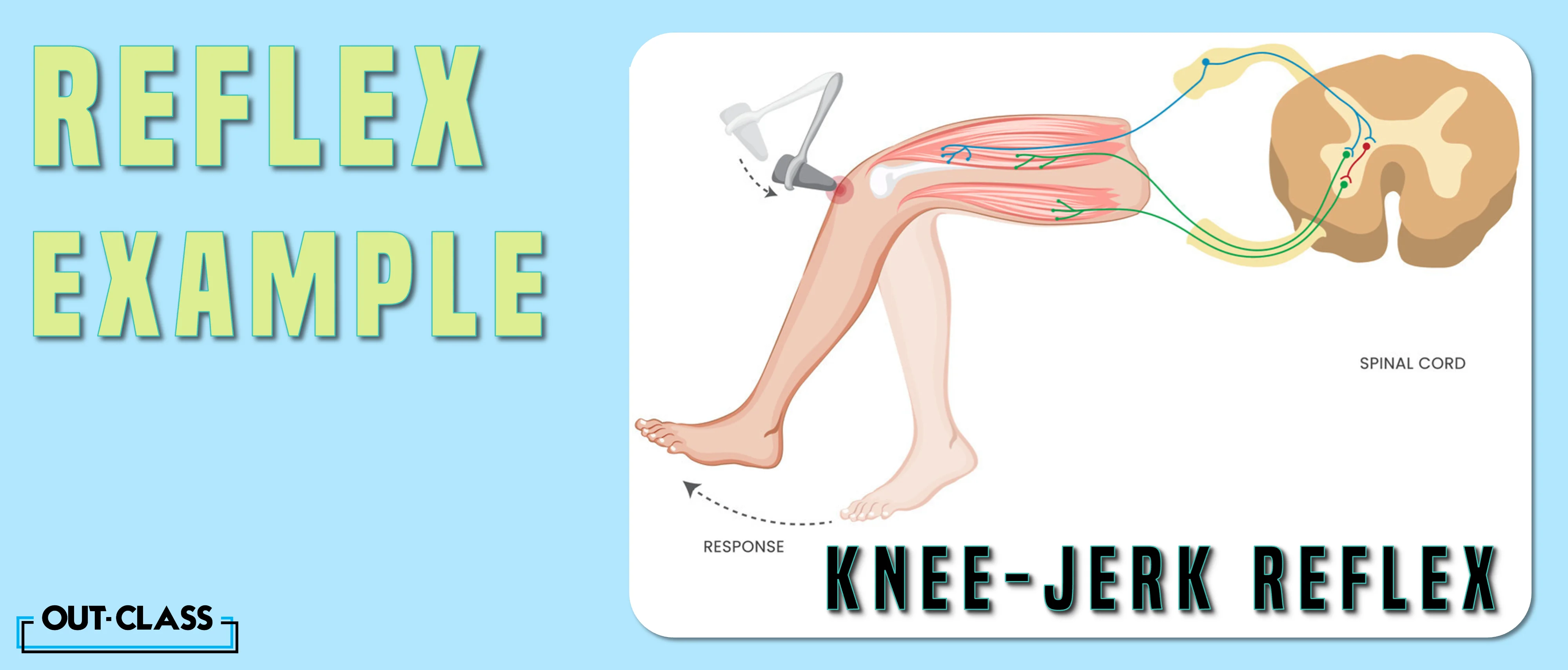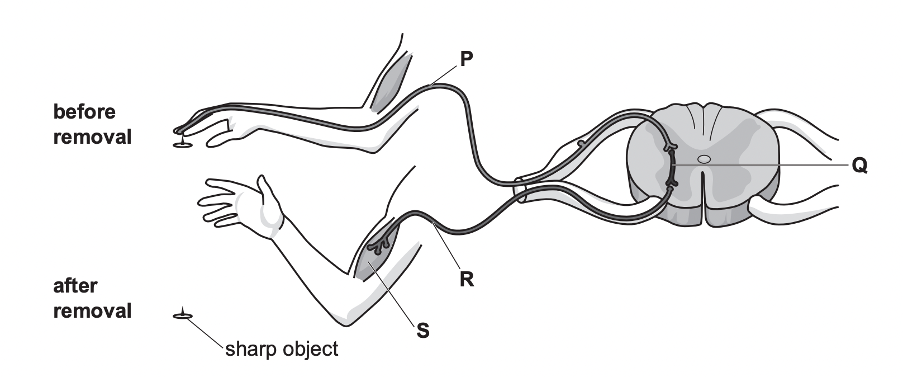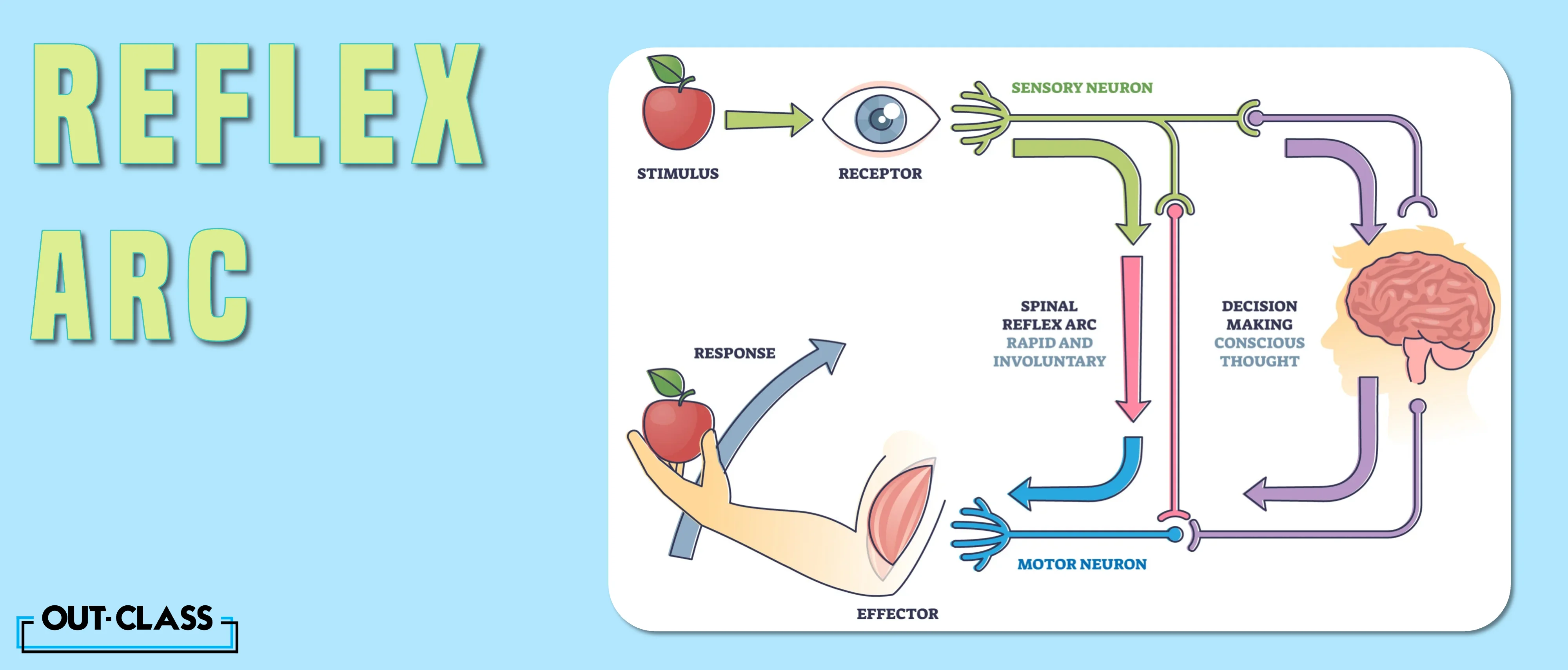Most of us have heard the term “reflex action” at some point in our lives, but as IGCSE and O Level Biology students, it is vital to understand what goes on behind the scenes. Let’s dive right in!
Examples of Reflex Actions:
Examples of reflex actions include:
-
Blink reflex: We blink when an object comes too close to the eye
-
Knee-jerk reflex: Tapping the tendon right below the knee causes the leg to spring up

-
Gag reflex: When an object touches the back of the mouth, the gag reflex tries to prevent choking
-
Pupillary light reflex: The pupil constricts when exposed to bright light
The Mechanism of a Reflex Action
A common question IGCSE/O Level Biology students ask is, “What is the role of the brain in reflex action?”. The answer to this question is intriguing: the brain has no role in reflex actions. Reflex actions are typically mediated by the spinal cord.
The Reflex Arc
The reflex arc summarizes what happens in a reflex action. A stimulus (such as a hot flame near your hand) triggers a signal which travels on the sensory neuron to the spinal cord. From there, it is sent down a motor neuron to an effector muscle, such as a bicep, which helps pull your hand away from the flame.
In simpler words, the process of the reflex arc is:
-
Stimulus
-
Sensory neuron
-
Spinal cord / intermediate neuron
-
Motor neuron
-
Effector
Why are Reflex Actions Important?
A reflex action is a rapid and automatic response to a stimulus. Reflex actions are important because they protect humans from harmful situations without requiring a time-consuming decision process. You can think of reflex actions as hardwired paths in our nervous system.
How are Involuntary Actions Different from Reflex Actions?
Both involuntary and reflex actions occur without conscious thought. However, there are some notable differences:
-
Reflex actions like the knee-jerk reaction bypasses the brain. On the other hand, breathing is an involuntary action that involves the brain
-
Reflex actions are very rapid, whereas involuntary actions take relatively longer to take effect
-
Whereas a reflex action occurs through the reflex arc, involuntary actions, like heart rate increase due to adrenaline release, can be mediated by hormones or other parts of the nervous system.
Summary
In summary, as per IGCSE/O Level Biology, reflex actions are automatic, rapid responses to stimuli, primarily involuntary, and are under the control of the spinal cord. They are essential for protecting humans from harm.
Most Common Repeated Questions:
Unlock the secrets to acing your IGCSE & O Level exams with a sneak peek into the most frequently asked questions that have graced the past papers!
- The diagram shows structures involved in a reflex action that results in the removal of a person’s hand from a sharp object.

A) (i) Name and state the function of: structure P and structure 4 (4). (ii) Describe the location of structure Q in the nervous system (2)
B) Explain how the action of structure S results in the movement of bones at a named type of joint. (4) [May/June 2021]
FAQs:
Q. What are examples of reflex actions?
Examples of reflex actions include the blink reflex (blinking when an object is too close to the eye), knee-jerk reflex (knee springs up when the tendon below the knee is tapped), gag reflex (preventing choking when an object touches the back of the mouth), and pupillary light reflex (pupil constricts in response to bright light).
Q. What is the mechanism behind a reflex action?
Reflex actions are mediated by the spinal cord, and the brain has no direct role in the process. The reflex arc, involving a stimulus, sensory neuron, spinal cord, motor neuron, and effector muscle, summarizes the events in a reflex action.
Q. What is the role of the brain in reflex actions?
The brain does not play a direct role in reflex actions. Reflex actions are controlled by the spinal cord, providing rapid and automatic responses to stimuli without involving conscious thought.
Q. How does the reflex arc work?
The reflex arc is a pathway that involves a stimulus, a sensory neuron carrying the signal to the spinal cord, an intermediate neuron within the spinal cord, a motor neuron transmitting the signal, and an effector muscle that carries out the response.
Q. How are involuntary actions different from reflex actions?
While both involuntary and reflex actions occur without conscious thought, reflex actions bypass the brain and are mediated by the spinal cord. Involuntary actions, such as breathing, may involve the brain and can take longer to take effect.
Q. Can you provide examples of involuntary actions?
Examples of involuntary actions include breathing, heartbeat, and digestion. These actions, while automatic, may involve the brain and other parts of the nervous system, unlike reflex actions that primarily involve the spinal cord.


